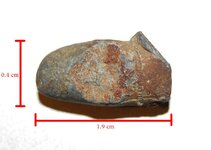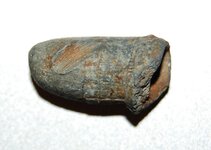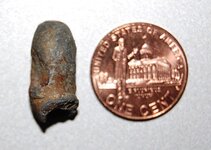Hestercd
Greenie
- Jul 12, 2006
- 13
- 4
- Detector(s) used
- AT Pro
Ace 250
Propointer
- Primary Interest:
- All Treasure Hunting
I'm looking for any information on this bullet I recently found while metal detecting in the Dug Gap area of NW Georgia. I have found many bullets here that date from the Civil War Battle that took place in this area all the way to modern ones that look as if they were fired just before I dug them up. This is the first kind like this however. I've included the measurements in the photos. Keeping in mind, of course, that these are as close to an "exact" measurement I could get from a fired bullet that is fairly deformed in some areas.
If anyone can help with an identification (caliber/type, maker, dates it would have been in use if not current) I would really appreciate it as then I can mark it off my list of unknowns! Thanks everyone!
If anyone can help with an identification (caliber/type, maker, dates it would have been in use if not current) I would really appreciate it as then I can mark it off my list of unknowns! Thanks everyone!







